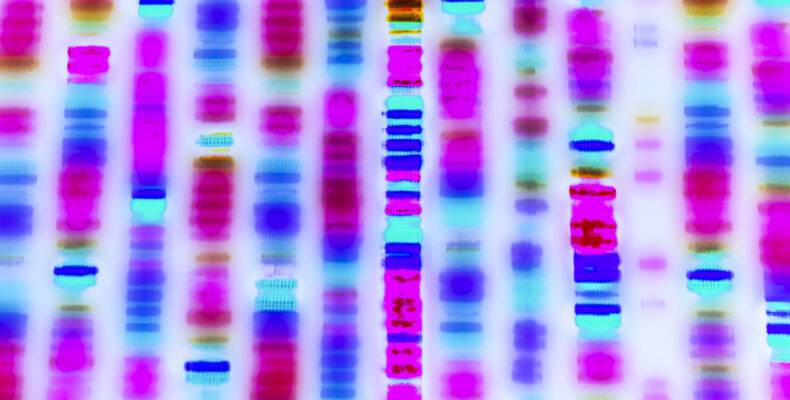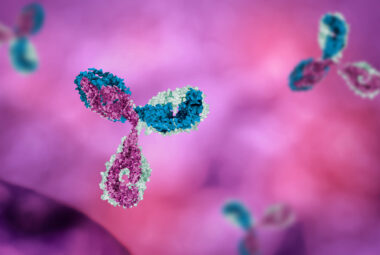
Biological sequencing: how inaccurate sequences can lead to a sequence of unfortunate events
Sequences are standardised representations of biological sequences, typically nucleotide (DNA/RNA) or amino acid (protein) sequences, that are included in patent applications (e.g. in the description and corresponding sequence listing) when an invention involves such subject-matter.
Sequences are crucial to patent applications because they support a clear and complete disclosure of the invention, enable patent offices to search, compare, and examine sequence data to determine prior art for evaluating patentability (i.e. novelty and inventive step), and provide standardisation by ensuring consistency across worldwide jurisdictions.
Accuracy is therefore crucial for numerous reasons:
- Inaccurate or incomplete sequences can lead to rejections, delays, or even a loss of rights;
- The claims define the subject-matter for which protection is sought, and if the claim references a sequence that is inaccurate then the claims arguably do not cover what they were intended to cover;
- Errors, such as incorrect nucleotides or amino acids, can misrepresent the invention and mislead examiners or third parties;
- Accurate sequences allow patent offices to run accurate sequence similarity searches to assess patentability in relation to prior art; and
- Failure to meet formatting standards (e.g. under WIPO ST.26, discussed below) may render the filing non-compliant requiring costly corrections.
A UK High Court decision handed down earlier this year emphasised the importance of patentees ensuring that their patent sequence data is correct. The decision in Samsung Bioepis UK Ltd v Alexion Pharmaceuticals Inc [2025] EWHC 1240 (Pat), issued by Mr Justice Meade, outlines how small errors in sequence information can be difficult to rectify and costly, not just in terms of expense but also in the enforceability and validity of a patent.
The case concerned Alexion’s UK patent derived from EP3167888 associated with the C5 binding antibody eculizumab – marketed as Soliris® – a blockbuster drug used for treating the rare condition paroxysmal nocturnal haemoglobinuria (PNH). The defendants, Samsung Bioepis and Amgen, each wanted to sell biosimilar versions of eculizumab but Alexion alleged that both products infringed its patent.
Initially, eculizumab was protected by the ‘Evans’ patent family (1994 priority date). Patents from this family were broadly directed to C5 binding antibodies but did not specifically disclose eculizumab, and the basic patent allowed a supplementary protection certificate (SPC) to be obtained covering eculizumab until 2020.
Alexion previously also submitted an entry to the Chemical Abstracts Service (CAS) in relation to eculizumab to obtain an International Nonproprietary Name (INN) i.e. a unique globally recognised name for the antibody. However, the sequence for eculizumab submitted to CAS contained a “major” error, which Alexion later realised and corrected in 2009. Clinical work in relation to eculizumab ensued, and several key papers published including one describing a clinical trial called TRIUMPH.
Alexion continued to seek protection for eculizumab in various forms via numerous patent applications, including an application filed in 2007 (2006 priority date) that eventually led to EP3167888. Its specification described the TRIUMPH trial and its claims were directed to the use of eculizumab per the regimen used in the trial. However, the priority claim was lost, resulting in the TRIUMPH paper becoming prior art and rendering the original claims unpatentable.
Having understood that the original CAS filing was wrong, Alexion changed strategy and sought protection for eculizumab itself (and not for its medical use) on the basis that the sequence for eculizumab had never in fact formed part of the prior art (the corrected CAS sequence became publicly available only after the filing date of EP3167888).
A second error transpired in that the light chain sequence disclosed in EP3167888 for eculizumab, referred to as SEQ ID NO: 4, had an extra 22 amino acids corresponding to a leader sequence (for folding, assembly, and secretion of the antibody from the cell).
Alexion tried to deal with this during prosecution by defining a light chain not having the extra 22 amino acids, but the claims were objected to by the European Patent Office (EPO) for adding matter. EP3167888 therefore granted in 2024 with claims to SEQ ID NO: 4 having the extra 22 amino acids. Notably, the defendants’ products’ light chains do not have the extra amino acids but rather the exact sequence for eculizumab.
Separately, Alexion, when met with sufficiency objections over the years on its various patent applications, argued that eculizumab was prior art by virtue of the CAS filing and/or the Evans patent family. However, in other proceedings such as the present case, Alexion argued that eculizumab was not part of the prior art for novelty or inventive step purposes. Alexion further relied on the original CAS sequence to argue enablement for a separate application that granted even after realising the CAS sequence was wrong.
Alexion claimed innocence for its repeated errors, maintaining that the defendants’ products infringed the claims of EP3167888 as the skilled reader would realise that the extra 22 amino acids relate to a leader sequence that would inevitably be cleaved off in normal production, and thus the claim fundamentally required a light chain without the extra amino acids.
Naturally, the defendants argued that the claims of EP3167888 are limited to what they literally say and that the 22 amino acids are needed, no matter how the claims are construed. Alexion accepted via a “pragmatic concession” that if the defendants are right then EP3167888 is invalid, as “if there is no infringement then the claims are worthless”.
Further, though the specification of EP3167888 stated that eculizumab was prior art by virtue of the Evans patent family (resultant from the patent originally claiming a new medical use of the antibody and not the antibody as such) Alexion claimed this was also a mistake which the skilled person would realise. The defendants argued that if this was the case then though their products fall within the claims, the claims are invalid for being anticipated or obvious over the prior art (based on prior disclosures made by Alexion and the Evans patent).
Ultimately, Mr Justice Meade construed the claims of EP3167888 as not covering the exact eculizumab sequence meaning that the defendants did not infringe. However, even had he agreed with Alexion that the claims covered eculizumab, EP3167888 would have lacked an inventive step as the antibody sequence could have been easily arrived at by the skilled person based on prior art disclosures of eculizumab and similar antibodies in combination with common general knowledge of antibody engineering techniques.
In parallel, Alexion also brought infringement proceedings against the defendants at the Unified Patent Court (UPC). An initial application for preliminary injunctions against Samsung Bioepis and Amgen was rejected on the basis that it could not be established that the patent at issue was valid. On appeal, the UPC Court of Appeal held that the claims were limited to eculizumab having the leader sequence and thus invalid (on the basis of insufficiency), upholding the earlier decision and dismissing Alexion’s appeal.
Separately, the EPO Boards of Appeal have also emphasised the severe consequences of errors in patent sequence data (see, for example, T 1213/05).
The patentee must therefore ensure that sequences, not only those included in their patent applications but in CAS, INN, and SPC submissions, are accurate otherwise an error no matter how small can lead to a sequence of very unfortunate events leaving patentees facing great difficulties in translating their innovation into useful IP, even for blockbuster drugs.
This is easier said than done. One sequence alone may span thousands of amino acids or nucleotides, where many could have mutations or modifications. In turn, a sequence listing itself could contain many sequences. A sequence listing, required if an application includes sequences to further support a clear and complete disclosure of an invention, must also follow strict formatting rules defined by international standards, including WIPO ST.26 (filed in XML format) that has been mandatory since 1 July 2022.
Patentees must therefore take all necessary precautions to avoid errors, whether asking inventors to cast a careful eye over the sequences (more than once if necessary), using alignment software, or consulting attorneys to resolve any uncertainties from a legal or practical perspective.
Notably, sequences present one of the few scenarios where the subject-matter of the claims necessarily uses the description to interpret what the term ‘SEQ ID NO: X’ means. Without a corresponding description and sequence listing defining the actual sequence referred to as SEQ ID NO: X, the claim language means little in isolation. Indeed, G 1/24, handed down in June, reaffirmed that the description (and drawings) should always be consulted when interpreting the claims and not just when the claims are unclear or ambiguous.
Barker Brettell has a dedicated medical sector team who can assist and advise you on how to achieve the best protection for your innovation, including how to adequately prepare patent applications disclosing sequence information and sequence listings that conform to international standards. To continue the conversation, please contact the authors of this article, Laura Riggall and Jennifer Atkinson, or your usual Barker Brettell attorney.
Published: October 2025




